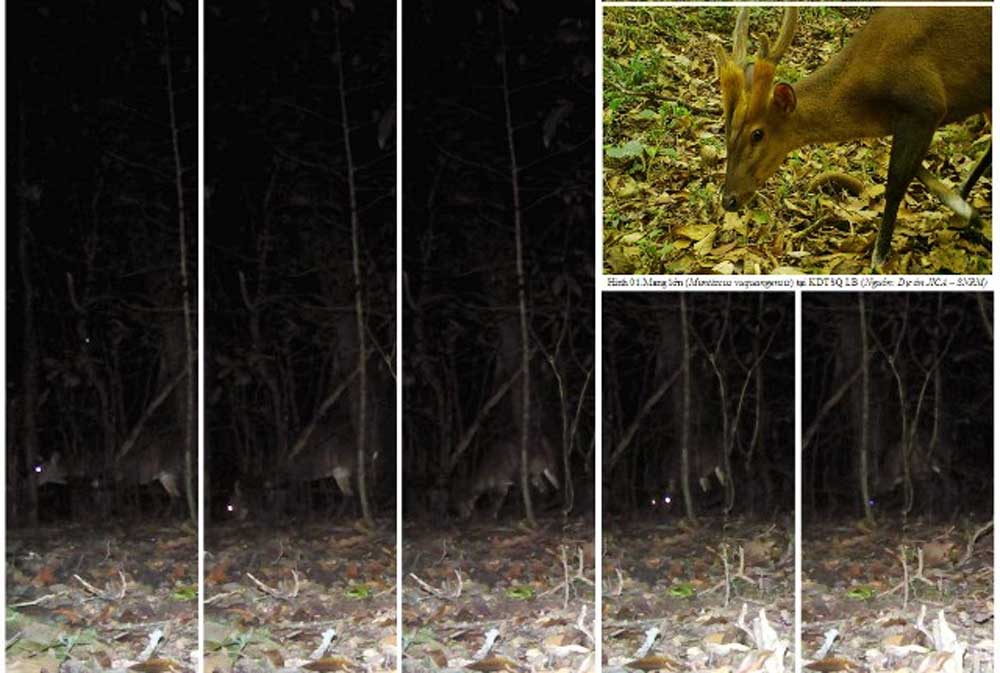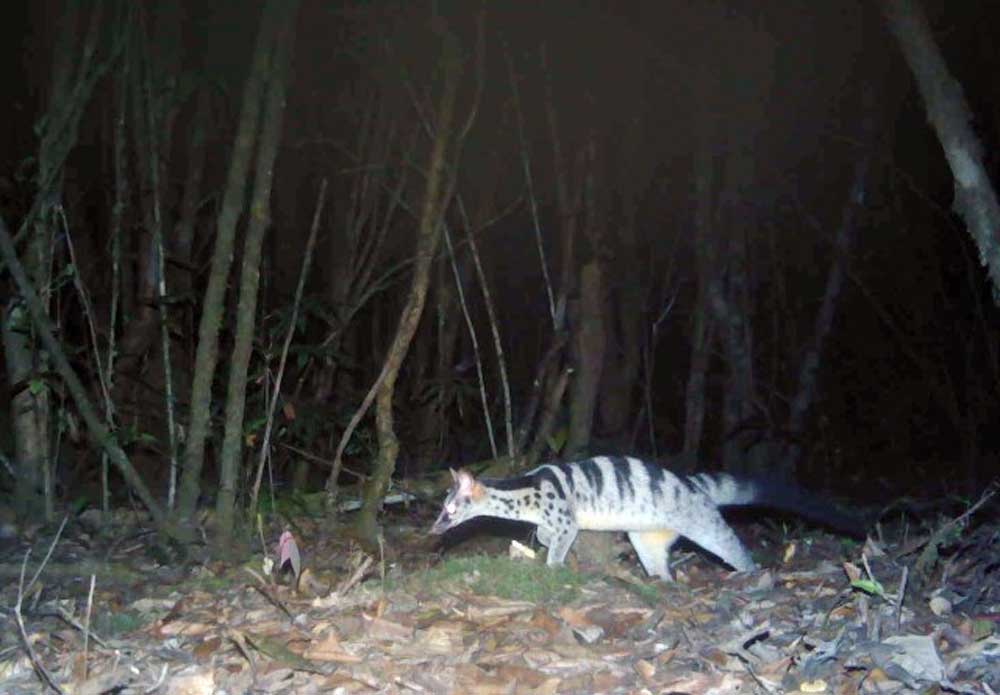Rare mammal diversity discovered in Bidoup - Nui Ba National Park
Since October 2019, Bidoup - Nui Ba NP, a large protected area located in the southern part of the Truong Son (Annamites) range, has cooperated with the Southern Institute of Ecology (SIE) and the Leibniz Institute for Zoo and Wildlife Research (Leibniz-IZW) to conduct a first large scale camera-trapping survey across the entire protected area.
 |
|
Rare species recorded through camera traps at Bidoup - Nui Ba National Park. |
Although the study is still ongoing first camera-trapping data revealed exceptionally high mammal diversity, including at least 21 mammal species, seven of which are globally threatened.
“We were thrilled to find such a diverse mammal community,” said Dr. Le Van Huong, Director of Bidoup - Nui Ba NP. “Rare animals that have slipped into extinction in other parts of Vietnam still thrive in the forests of Bidoup - Nui Ba NP. This protected area is a valuable landscape for Vietnam and global biodiversity conservation.”
The most important finding was multiple records of the large-antlered muntjac Muntiacus vuquangensis, a type of deer that is found only in the Annamites ecoregion and is Critically Endangered. Conservation scientists believe that the species has become extinct in most of its former Vietnamese range.
 |
|
The large-antlered muntjac. |
After the first photographs of large-antlered muntjac were taken in 2017, these new records strengthen the assessment of biologists that Bidoup - Nui Ba NP may be one of last strongholds for this threatened species in Vietnam.
According to Dr. Andrew Tilker from the Global Wildlife Conservation, Langbiang Biosphere Reserve with the core area of Bidoup - Nui Ba NP is the leading area of conservation of large-antlered muntjac and mammal species that have disappeared in Vietnam. As such, Bidoup - Nui Ba NP plays an extremely important role in the future long-term survival of the species.
In addition to the large-antlered muntjac, the camera-traps also recorded another Annamite endemic, the Owston’s civet Chrotogale owstoni. This strikingly-patterned small carnivore is now close to extinction as a result of widespread poaching to supply the wildlife bushmeat trade in Vietnam.
“Although only half of the protected area has been surveyed yet, we already collected seven records of the species. Bidoup - Nui Ba NP is one of very few protected areas in Vietnam that have this high number of records of Owston’s civet,” said An Nguyen, project coordinator and PhD student of the Leibniz-IZW. “Our data indicate that a healthy population likely survives inside the national park.” An added.
The researchers were surprised to record numerous photographs of sun bear Helarctos malayanus. Although sun bear are common in bear bile farms throughout Vietnam, the species is incredibly rare in the wild. The last known photo of a sun bear in the wild was taken almost 20 years ago in Cat Tien NP. The new photographs provide hope for this rare species in Vietnam.
 |
|
The Owston’s civet. |
However, this hope is tempered by the gruesome reality of poaching in Vietnam, as revealed by one of the camera-trap photos: one sun bear showed a horrific wound on its leg caused by a snare. Although the photos show, yet again, the terrible toll that snaring is taking on Vietnam’s biodiversity, wildlife is still better than other areas across Vietnam. “The presence of the Annamite endemics and the sun bear show that Bidoup - Nui Ba NP experienced less snaring compared to other protected areas in the Annamites”, An explained.
One of the most unexpected findings was a set of images of an albino porcupine. Although porcupines are still relatively abundant across many protected areas in Vietnam, all-white porcupines are extremely uncommon.
Nobody has really heard of wild albino porcupines in the tropical forests of Southeast Asia. This discovery is emblematic of the what makes Bidoup - Nui Ba NP so special: it is full rarities, and it makes one wonder what else could be hiding in its forests.
Source: NDO
 Bắc giang
Bắc giang















Reader's comments (0)